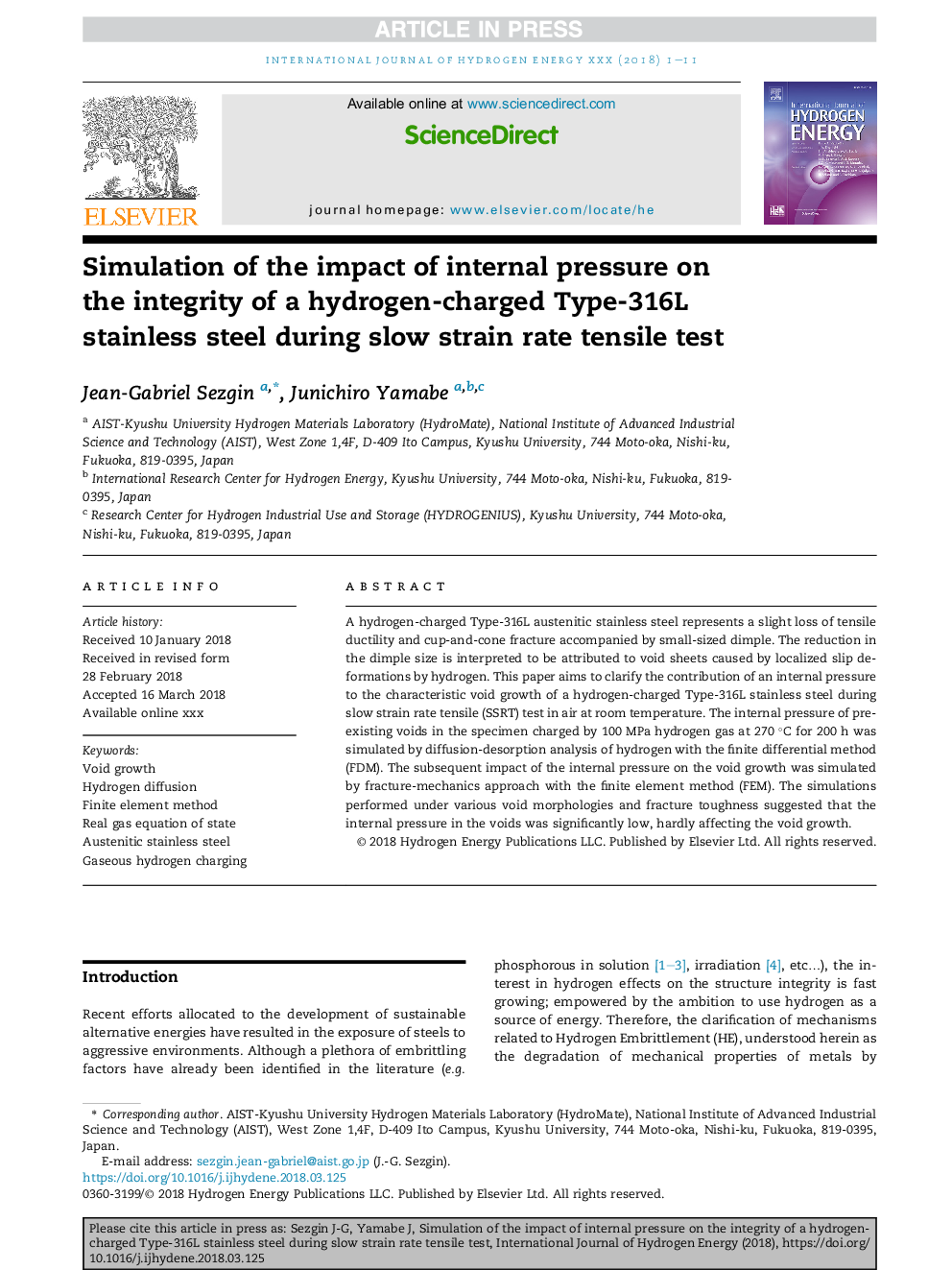| Article ID | Journal | Published Year | Pages | File Type |
|---|---|---|---|---|
| 7706327 | International Journal of Hydrogen Energy | 2018 | 11 Pages |
Abstract
A hydrogen-charged Type-316L austenitic stainless steel represents a slight loss of tensile ductility and cup-and-cone fracture accompanied by small-sized dimple. The reduction in the dimple size is interpreted to be attributed to void sheets caused by localized slip deformations by hydrogen. This paper aims to clarify the contribution of an internal pressure to the characteristic void growth of a hydrogen-charged Type-316L stainless steel during slow strain rate tensile (SSRT) test in air at room temperature. The internal pressure of pre-existing voids in the specimen charged by 100 MPa hydrogen gas at 270 °C for 200 h was simulated by diffusion-desorption analysis of hydrogen with the finite differential method (FDM). The subsequent impact of the internal pressure on the void growth was simulated by fracture-mechanics approach with the finite element method (FEM). The simulations performed under various void morphologies and fracture toughness suggested that the internal pressure in the voids was significantly low, hardly affecting the void growth.
Related Topics
Physical Sciences and Engineering
Chemistry
Electrochemistry
Authors
Jean-Gabriel Sezgin, Junichiro Yamabe,
